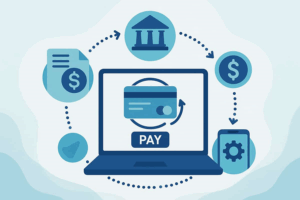
Investing may be a thrilling experience, but is DIY investing the ideal way to start investing, or does it cause unneeded frustration? Many first-time investors begin investing independently to gain control over their financial circumstances. However, given market volatility and investment management difficulties, a solution like Albert investing may be a great option.
Understanding DIY Investing
DIY investing is defined as managing your portfolio without the aid of a financial adviser or professional, certified financial planner. It necessitates a thorough understanding of portfolio structure, asset allocation, and market sentiment. While this technique provides control, it also poses obstacles, such as making market-based judgments and maintaining a diverse portfolio.
Pros and Cons of DIY Investing
| Aspect | Pros | Cons |
| Control | Complete control over investment decisions | Requires extensive knowledge |
| Costs | Avoids traditional financial advisor fees | Risk of costly mistakes |
| Flexibility | Choose investment vehicles like index funds, ETFs, and mutual funds | Can be overwhelming without guidance |
| Market Timing | Ability to react quickly to market shifts | Prone to emotional decision-making |
| Diversification | Freedom to build a well-diversified portfolio | Harder for beginner investors to achieve balance |
Key Points to Consider for DIY Investors
1. Investment Techniques and Portfolio Management
A well-defined investment plan is necessary for successful DIY investing strategies. Popular methods include:
· Value investing is the purchase of inexpensive stocks based on their stock price and fundamentals for value investors.
· Momentum investing refers to investors focused on investment based on current trends and market timing.
· Dollar-cost averaging is consistently investing a constant amount to reduce market volatility.
· Growth investing entails focusing investment dollars on stocks having a strong potential for long-term returns.
· Income investing is passive investing, focusing on assets that pay steady dividends.
2. Risk Tolerance and Financial Targets
Before committing to a portfolio allocation, you should assess your risk tolerance. Younger investors may choose growth stocks and equities, but those nearing retirement may select low-cost index funds.

Clearly stated financial goals, such as a down payment, retirement accounts, or emergency money, aid in developing a successful financial plan. Understanding the mix between high-risk and cautious investments is essential for a long-term investing path.
Managed vs. DIY Investing
For people intimidated by portfolio management, guided investing and actively managing funds via robo advisors or portfolio managers may be a better alternative. Managed portfolios maximize asset allocation through automation and professional skill, generally with lower costs than traditional financial advisors.
Comparison: DIY vs. Managed Investing
| Factor | DIY Investing | Managed Investing |
| Cost | Potentially lower if done wisely | Typically involves fees |
| Time Commitment | Requires ongoing research | Less time-consuming |
| Market Expertise | Investors must understand technical analysis through financial analysts’ journals. | Experts manage investment accounts |
| Emotional Control | Investors prone to panic during market shifts | Professionals apply disciplined strategies |
| Customization | Complete control over asset class choices | Limited but structured options |
| Diversification | Requires active efforts to achieve balance | Typically well-diversified by default |
Hybrid Investing: The Perfect of Both Worlds?
A hybrid strategy combines DIY investment with expert advice. Schwab Intelligent Portfolios, for example, allow investors to automate their investments while managing certain assets autonomously.

This whole investing process provides freedom while benefiting from experienced management.
Common Pitfalls of DIY Investing
1. Overtrading: Overtrading is defined as frequent purchasing and selling based on emotional choices.
2. Ignoring Portfolio Diversification: Not maintaining a well-diversified investment portfolio raises risk.
3. Underestimating Market Risks: Ignoring market sentiment and economic movements might result in losses.
4. Lack of Tax Planning: Consulting with a top tax advisor can help decrease taxable income and maximize investment profits.
5. Mismanaging Cash Flow: Investing too much while you borrow money or not covering living expenses might lead to financial instability.
6. Ignoring Company-Sponsored Plans: Failure to take advantage of 401(k) matching or other company employer-sponsored retirement plan perks.
7. Falling for Market Hype: Following trends without extensive study might lead to poor investment returns and decisions.
How to Begin Making Wise Investment Decisions
1. Establish Clear Investment Goals: Define your investment objectives, such as retirement savings or a 401(k).
2. Select the Best Investment Vehicles: Think about exchange-traded funds (ETFs), mutual funds, and fractional shares.
3. Use Online Brokers: Platforms like brokerage firms allow access to diverse portfolios.
4. Market Shifts: Stay updated on current economic trends and stock market moves.
5. Seek Professional Guidance When Necessary: If investing on your own is daunting, try guided investing.
6. Diversify Portfolio Allocations: To reduce risk, diversify your portfolio allocations by balancing stocks, bonds, and alternative assets.
7. Reinvest Earnings: Use dividends and capital gains to invest smart money to increase wealth more effectively.
Conclusion
DIY investing provides liberty, but it is not without obstacles. For people unfamiliar with the investment process, combining automated investing with professional advice can result in superior long-term results. A deliberate investment strategy, whether through DIY investing or professional management, provides financial development and stability.
Furthermore, knowing various investment vehicles, such as mutual funds, ETFs, and individual stocks, enables investors to make well-informed financial decisions and invest money smartly. Keeping up with market trends, financial news, market prices, and investing ideas can help your portfolio perform better over time.
Check out this guide and the ultimate resource for more tips on making sound financial decisions.















